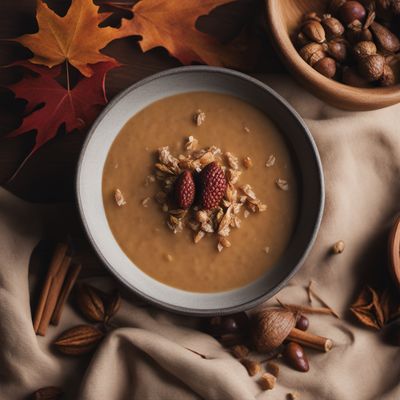
Ingredient
Meat based spreadable-textured specialities
Savory Spreads
Meat-based spreadable-textured specialties are culinary creations made from finely ground or processed meats, combined with various seasonings, herbs, and sometimes additional ingredients such as cheese or vegetables. These spreads have a smooth and creamy texture, making them easy to spread on bread, crackers, or other accompaniments. They are known for their rich, savory flavors that can range from mild to bold.
Origins and history
The concept of meat-based spreadable-textured specialties can be traced back to ancient times when people developed methods to preserve meat. Over the centuries, different cultures have created their own versions of these spreads, incorporating local ingredients and flavors. Today, they are enjoyed worldwide as a versatile and delicious addition to meals and snacks.
Nutritional information
Meat-based spreadable-textured specialties can be a good source of protein, vitamins, and minerals, depending on the specific ingredients used. However, they can also be high in fat and sodium, so moderation is key. It is important to read the nutrition labels and choose options that align with individual dietary needs and preferences.
Allergens
Meat-based spreadable-textured specialties may contain allergens such as dairy, gluten, or specific meats that individuals may be allergic to. It is essential to carefully read the ingredient labels and choose products that are suitable for personal dietary restrictions or allergies.
How to select
When selecting meat-based spreadable-textured specialties, opt for reputable brands or artisanal products that prioritize quality ingredients and production methods. Look for spreads that are free from artificial additives, preservatives, or excessive sodium. Consider the specific flavors and ingredients that appeal to your taste preferences.
Storage recommendations
To maintain the freshness and quality of meat-based spreadable-textured specialties, store them in the refrigerator at the recommended temperature. Ensure that the container is tightly sealed to prevent air exposure. Consume within the recommended time frame stated on the packaging for the best taste and texture.
How to produce
Producing meat-based spreadable-textured specialties requires specialized equipment and knowledge of meat processing techniques. It is typically done by professional chefs, but individuals can experiment with creating their own spreads at home using ground or processed meats, seasonings, and other desired ingredients. Follow proper food safety guidelines and refrigerate homemade spreads to maintain freshness and prevent spoilage.
Preparation tips
Meat-based spreadable-textured specialties can be used as a delicious spread on sandwiches, bagels, or crackers. They can also be incorporated into appetizers, such as stuffed mushrooms or savory pastries. Additionally, they can be enjoyed as a standalone indulgence, paired with crusty bread or vegetable sticks.
Culinary uses
Meat-based spreadable-textured specialties are commonly used in various cuisines around the world. They are often enjoyed as a part of charcuterie boards, antipasti platters, or as a filling for sandwiches and wraps. These spreads add a rich and savory element to dishes, enhancing their overall flavor profile.
Availability
Meat-based spreadable-textured specialties are commonly available in delicatessens, specialty food stores, and some supermarkets. They can also be purchased online from reputable retailers. The availability may vary depending on the region and local culinary preferences.


